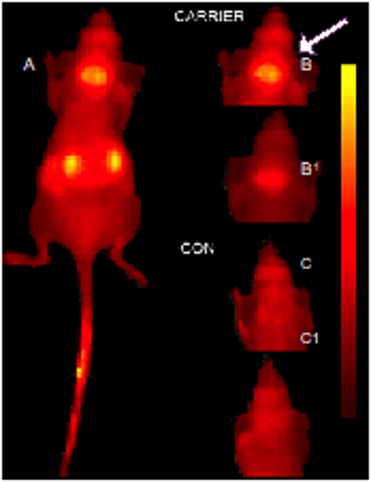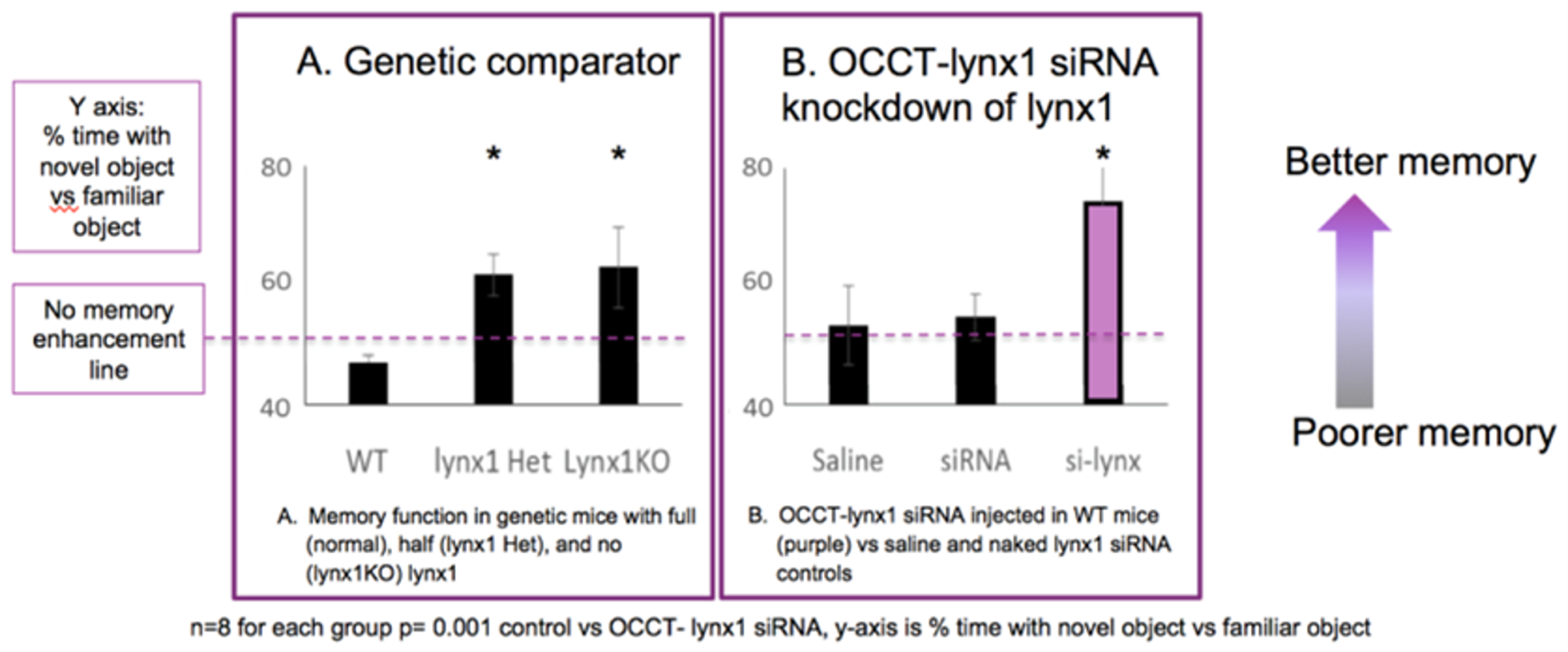
Figure 3. Rapid Brain Uptake of OCCT:lynx1 siRNA in vivo. Uptake of the labeled siRNA complexed to OCCT was observed after few minute (A,B) and 1 hour (B1). No signal was observed when only labeled siRNA was injected (C, C1).

Figure 4. OCCT-lynx1 siRNA improves memory. Increased novel object recognition memory (A) and knockdown of the target gene (B) was observed in OCCT-lynx1 siRNA treated mice
